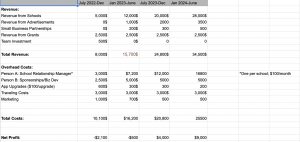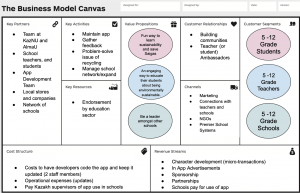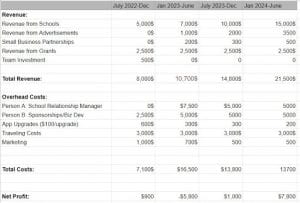Step 1: Facts
- There is a disease-causing pathogen only found in a small region of Lesotho.
- The testing is simple, but the trip/equipment will cost money, and community assistance is required.
- We are studying the life cycle/characteristics of a certain pathogen.
- The people in Lesotho know where (all?) the water sources are.
- We are expected to write some publications on what we find from our research.
- Characterizing pathogens can help further research into how to make water safer to drink.
- Assumption: The pathogen is present in the community water sources.
- Assumption: We know that there is no risk of further water contamination from the studies we are conducting.
- Assumption: We got IRB approval, and approval from Lesotho to do research there.
Ethical Issue:
- Is this study just an example of hit and run research or does this research actually help the people of Lesotho or have social value in general?
- Balance between ethics and rigor, not doing study rigorously enough is an ethical issue too.
Step 2: Stakeholders
- Researchers (academics)
- The University of the academics
- Funders of the research/Government Agency
- Villagers of Lesotho
- Healthcare System/Providers (secondary/tertiary)
- Academic Journal
Step 3: Motivations
- Researchers -> academic prestige, maintain jobs, create positive impact through their research/findings.
- The University of the academics -> maintain their reputation globally, advancing knowledge & delivering value to society.
- Villagers -> obtain clean water supply, stay healthy, not have their lifestyle completely disrupted, lower risk of contracting disease, building connections and relationships, possible economic development with cleaner water in tourism and exporting water to South Africa.
- Funders/Government Agency -> stake in developing an additive or water cleaning system, obtain more grants for future work, research might help their projects and development, creates a positive image of corporate social responsibility, develop their brand in this area.
- Healthcare system/providers in Lesotho -> less burden from waterborne diseases, more resources to devote to other conditions.
- Academic Journal -> acquire new research (groundbreaking) that adds to general knowledge of pathogens, build reputation.
Step 4: Solutions
- Conduct experiments on how the pathogen affects health. Experiments would include testing the water with pathogens on rats.
- Select guides which are knowledgeable of water sources; typically women
- Test water from multiple sources; in villages with different socioeconomic statuses.
- Only collect the water samples in vials when doing on ground work; test the water later in labs.
- Educate the villagers of Lesotho about your findings while you are there about things they can do in their capacities & after the water has been tested, and help them towards finding a solution to any disease-causing pathogens you found
- Sharing information and results that would benefit the people of Lesotho (+those downstream of Lesotho) after the research gets published
- Email the papers to the heads of communities to show that something came out of the research they assisted in
- Maximizing clinical value & making sure there is positive social impact/return
- Identify the source or the pathogen. Where/how is it contaminating the lake.
- Conduct simple examinations on locals to identify symptoms and effects from drinking the lake’s water.
- Attempt to provide a temporary cleaning solution or import purified water.
- Scan the area of the lake. Identify behaviors from the locals that could be contributing to the pathogen.
- Request the right to access the water sources from legislation/leaders of each village and explain what you are doing/plan to do/and how you are testing, negotiating for access
- Appeal to community health workers in Lesotho who understand what you are doing and can explain it to the community
- Negotiations and incentives are a way of reducing what you are taking personally and providing a return which addresses the issue of beneficence
- Also addresses the rigor of the study because you’re making sure you contact and get information from people who are educated about your research and who can provide you with accurate information
- Ensuring that you do the study right, focus on legitimacy
- PROS: Working with community, broadening knowledge of pathogens, potentially helping them in future.
- CONS: Not reporting back to them with enough information on our findings to help them in any sense (no compensation), process of requesting access to the water in Lesotho through the government may take longer than we anticipated, we do not find anything helpful/new in our research, the community members in Lesotho have the right to turn us down (our funding sources would be mad).
- ETHICAL PRINCIPLE/CODE: These solutions and the research are mostly consequence based thinking, because it is focused on discovering more about pathogens and creating more knowledge about them globally in the hopes that some disease prevention will come out of it. However, our steps to request access to the water sources in Lesotho bring a more duty and virtue based approach because we are trying to get their approval, work with the community members, and hopefully bring back new information to them to help in the future.
Step 5: Additional
- NSPE Code of Ethics: This legislature enforces that engineers “hold paramount the safety, health, and welfare of the public” in their work. Hence, an engineer need note this when debating the ethics of this study.
- Who has approved the study? The university? Has it received IRB approval?
- IRB Ethics:
- Social or Scientific Value
- Scientific Validity
- Fair Subject Selection
- Favorable Risk – Benefit
- Independent Review
- Informed Consent
- Respect for Potential and Enrolled Subjects
- IRB Ethics:
- Belmont Report -> beneficence, respect for persons, justice
- Are you protecting the anonymity of the volunteers if they wish for it?
Step 6: Best Action
- To start: request the right to access the water sources from legislation/leaders of each village and explain what you are doing/plan to do/and how you are testing, negotiating for access (the meeting will be in a culturally sensitive location and adhere to their standards).
- Appeal to community health workers in Lesotho who understand what you are doing and can explain it to the community
- To compensate the community members that help us during our study, we will drive them to the water sources, and when we are testing the water, explain our process and what our intended outcome is. In a sense, educating them on pathogens and disease preventions in water.
- Long term compensation would be to report back to them about our findings. Give the heads of the community our publications, and educate them on potential solutions to rid of any disease-causing pathogens we find.
- To make the study as just as possible, we will test water from multiple sources; in villages with different socioeconomic statuses. We will also ask those who are most educated on the water sources (women?).
- When testing, we will only collect the water samples in vials when actually at the location, and test the water later in labs. That way we are disrupting villagers as little as possible.
- Potential downsides to this plan are that the community members/government of Lesotho may want more say in the study and want to play a bigger role, may not allow us into their country in the first place if they do not believe our study will help them, or may want more immediate compensation.
Step 7: Venture Implications
- Improve community health.
- Opportunity to market water treatment/cleaning solution.
- Adding to knowledge of waterborne pathogens.
- Enhance knowledge through publications and education.
- Potential positive or negative environmental implications if the water treatment solution is derived from this research and introduced to the community.
- Potential employment/volunteering of locals into protecting the lake and working with our venture apply our solutions.




